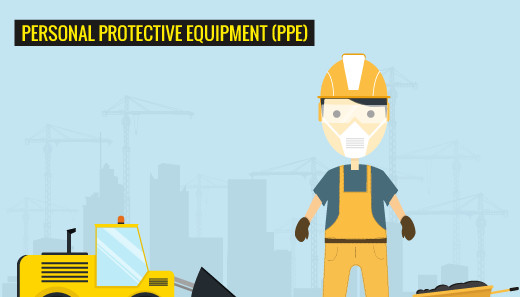Safety in the workplace or during various activities is paramount. Whether you’re on a construction site, in a laboratory, playing sports, or dealing with hazardous materials, protective equipment plays a crucial role in safeguarding individuals from potential risks and injuries.
In this comprehensive guide, we will delve into various types of protective equipment, their purposes, and the importance of choosing the right gear for the job.
Contents
Hard hats
Hard hats are one of the most recognizable pieces of protective equipment. These sturdy helmets are designed to shield the head from falling objects, electrical hazards, and impacts. They come in various styles, with some featuring suspension systems for added comfort and protection. In construction and industrial settings, wearing a hard hat is often mandatory to minimize head injuries caused by accidents.
Safety glasses/goggles
When it comes to protecting your eyes in the workplace, safety glasses and goggles are a must-have. Your eyes are incredibly vulnerable to a wide array of hazards, such as harmful radiation, chemicals, and flying debris. Luckily, safety glasses and goggles provide an essential barrier between your eyes and these potential threats.
Safety glasses typically come with side shields for added protection, while goggles feature a sealed design to prevent any particles or chemicals from entering your eyes. Many safety glasses and goggles are made from polycarbonate plastic, which is a highly durable material that can withstand impacts without shattering.
Earplugs/earmuffs
Excessive noise levels can lead to hearing loss and other auditory issues. Earplugs and earmuffs are worn to protect your ears from harmful sound levels. Earplugs fit snugly inside the ear canal, blocking out noise, while earmuffs cover the entire ear, creating a soundproof barrier. These are commonly used in noisy environments like construction sites, manufacturing plants, and airports.
Respirators/masks
Inhaling hazardous particles, gases, or vapors can have severe health consequences. Respirators and masks are crucial for protecting your respiratory system. These devices come in various forms, from N95 masks that filter out fine particles to full-face respirators equipped with cartridges to filter specific gases and chemicals. Respirators and masks are commonly used in healthcare, construction, manufacturing, and other industries.
Gloves
Our hands are incredibly versatile but also highly vulnerable to injury. Gloves are designed to protect the hands from a wide range of hazards, including cuts, abrasions, chemicals, extreme temperatures, and biological agents. Depending on the task at hand, different types of gloves, such as leather, latex, nitrile, or cut-resistant gloves, may be required.
Safety shoes/boots
Safety shoes and boots are essential for protecting your feet from various workplace hazards. These include falling objects, punctures, electrical hazards, and slippery surfaces. Safety footwear is typically equipped with reinforced toe caps, slip-resistant soles, and insulation to provide maximum protection and comfort.
High-visibility clothing
In environments with low visibility, such as construction sites or roadwork zones, being easily seen is crucial to prevent accidents. High-visibility clothing, often in fluorescent orange or yellow with reflective strips, helps workers stand out and stay safe, especially when working around moving vehicles.
Fall protection gear
When working at heights, fall protection gear is a must. This includes harnesses, lanyards, and anchor points designed to prevent falls and minimize the risk of serious injury. Whether you’re in construction, roofing, or window cleaning, these tools are critical for ensuring your safety.
Chemical resistant suits
In laboratories, chemical plants, and hazardous waste cleanup, workers face potential exposure to dangerous substances. Chemical-resistant suits, often made of materials like Tyvek or neoprene, provide full-body protection against chemical splashes, acids, and biohazards.
Body armor
Law enforcement and military personnel often wear body armor to safeguard themselves from ballistic threats and projectiles. Modern body armor is designed to be lightweight and flexible while providing a high level of protection. It’s a vital component of ensuring the safety of those in high-risk situations.
Choosing the right protective equipment
Selecting the right protective equipment is not a one-size-fits-all task. It requires a careful assessment of the specific hazards present in a given environment and the tasks being performed. Here are some key considerations when choosing protective gear:
1. Hazard assessment
Begin by identifying the potential risks in your workplace or activity. What types of hazards are present? Are there falling objects, chemical exposures, loud noises, or other dangers? Understanding the specific risks is the first step in selecting the appropriate gear.
2. Regulatory compliance
Many industries have specific safety regulations that dictate the use of certain protective equipment. Familiarize yourself with these regulations and ensure that the gear you choose complies with all relevant standards.
3. Comfort and fit
Protective equipment should be comfortable to wear for extended periods. Ill-fitting gear can lead to discomfort, reduced productivity, and even safety risks. Ensure that the equipment fits properly and does not hinder your ability to perform your tasks.
4. Durability
Consider the durability of the equipment. Will it withstand the conditions and demands of your work environment? High-quality gear may be more expensive upfront but can save you money in the long run by lasting longer and providing better protection.
5. Training and education
Proper training in the use and maintenance of protective equipment is essential. Employees and individuals should know how to put on, use, and maintain their gear correctly. Inadequate training can lead to accidents or reduced effectiveness of the equipment.
Conclusion
Safety should always be a top priority, whether you’re at work or engaging in recreational activities. Protective equipment serves as a crucial line of defense against a wide range of hazards. By understanding the various types of protective gear available and selecting the right equipment for the job, you can help ensure your safety and the safety of those around you. Remember, when it comes to safety, there’s no room for compromise—safety first, always.

